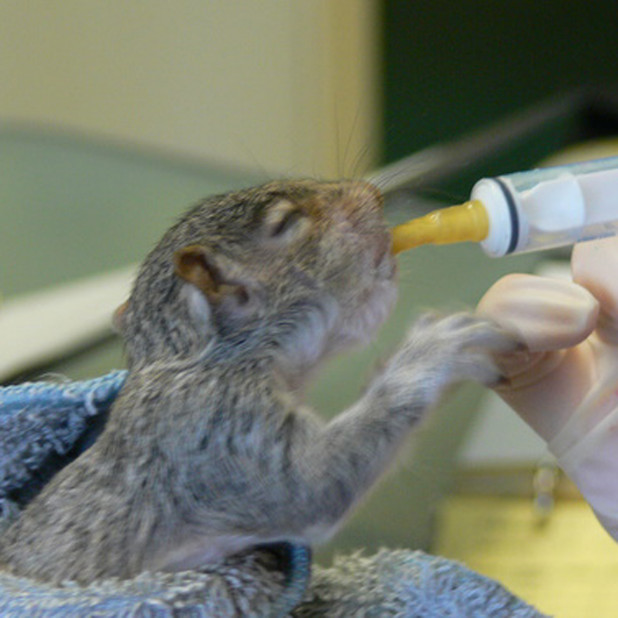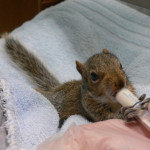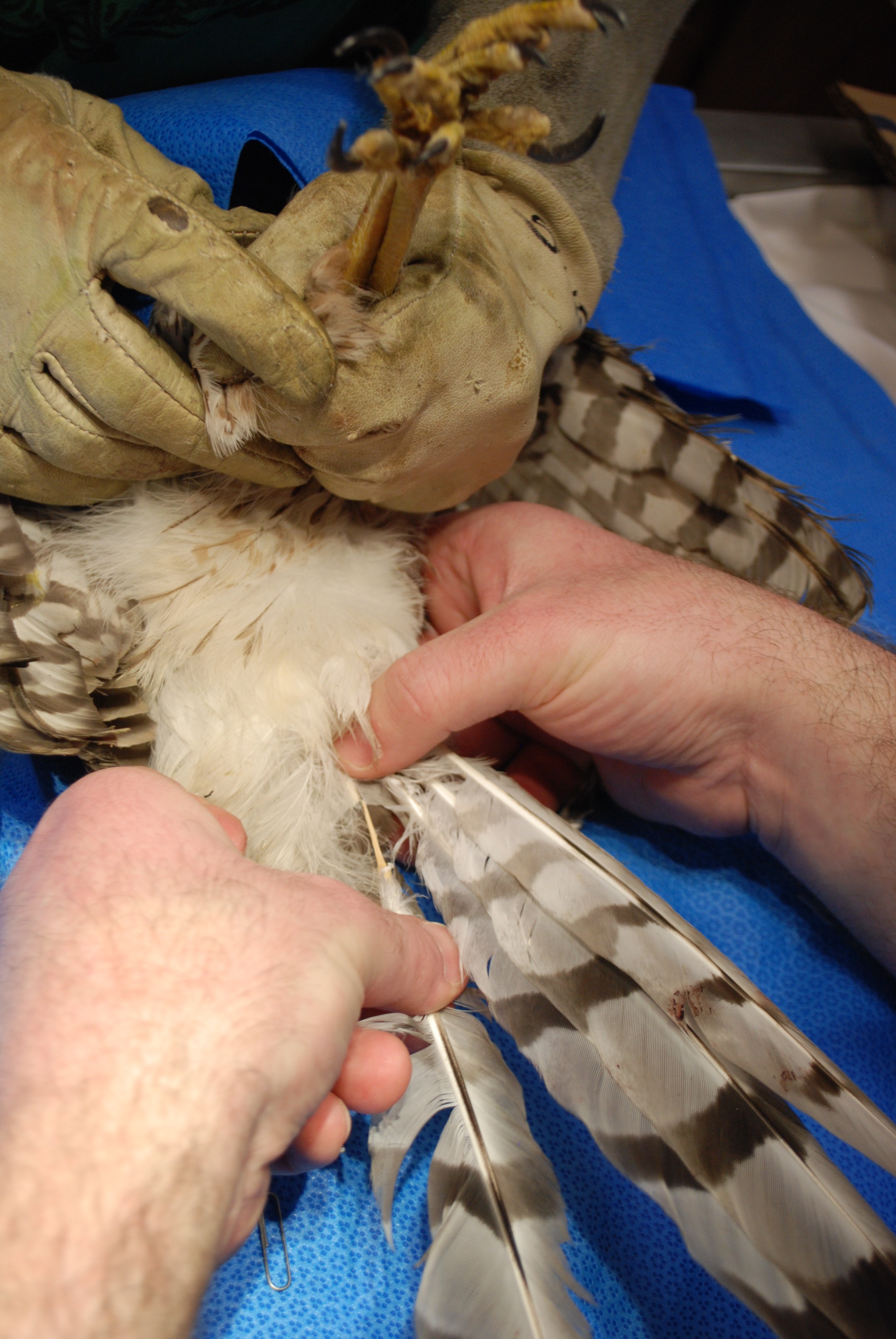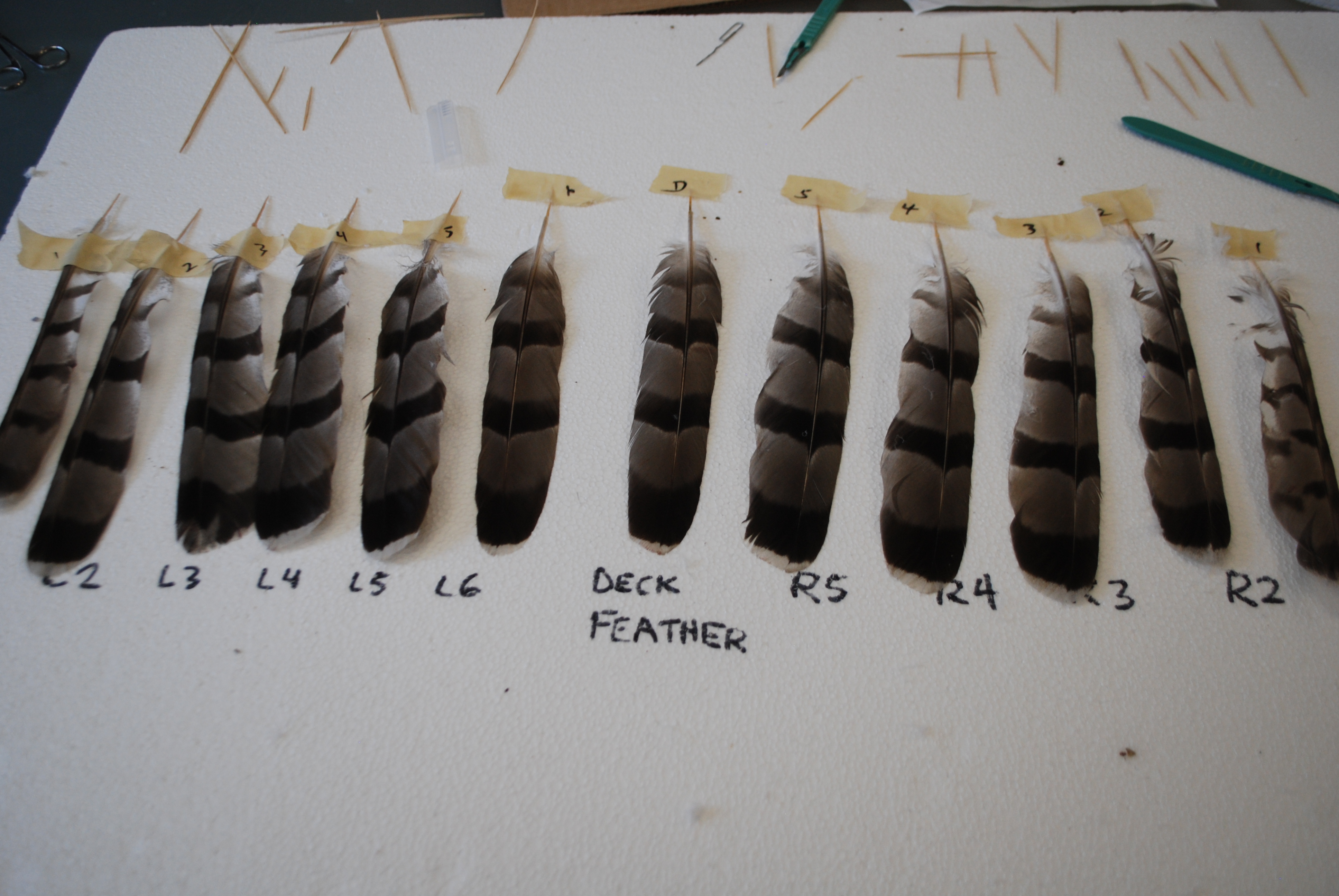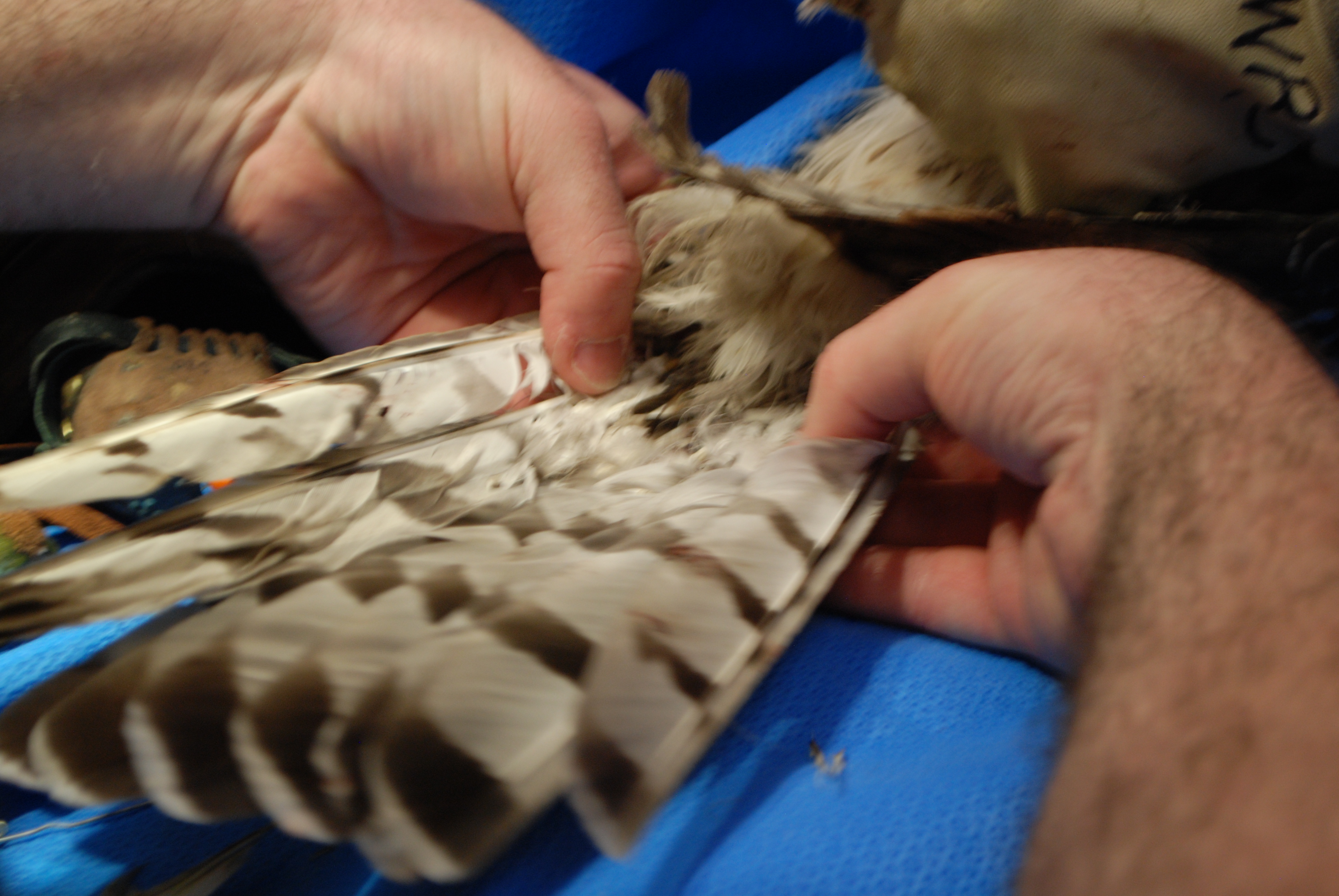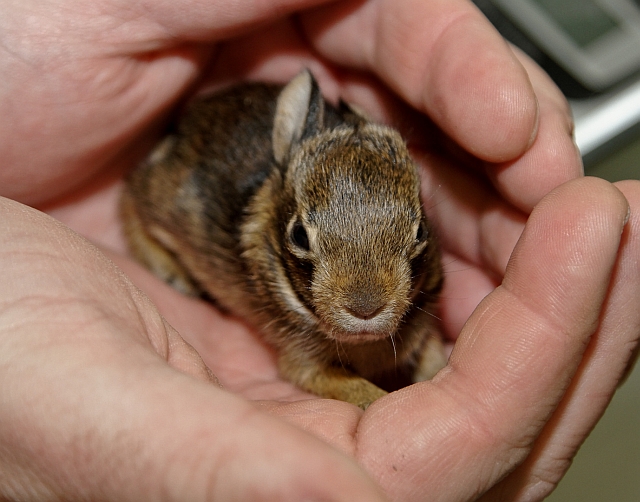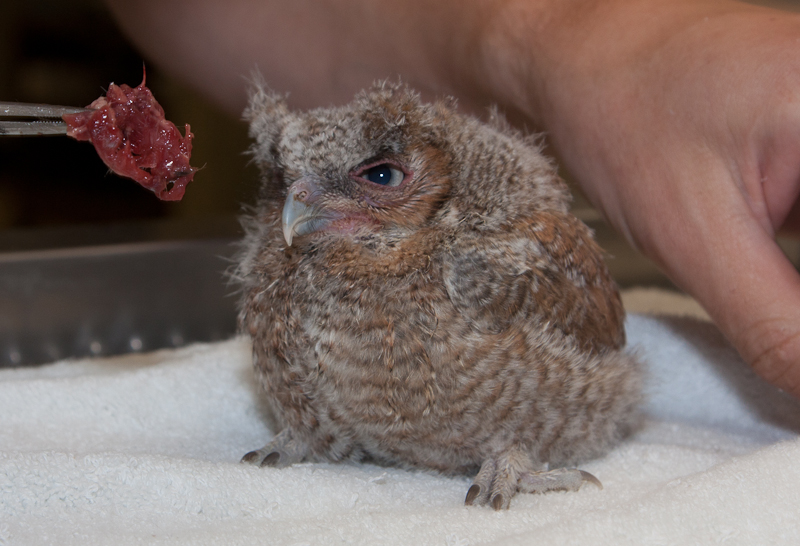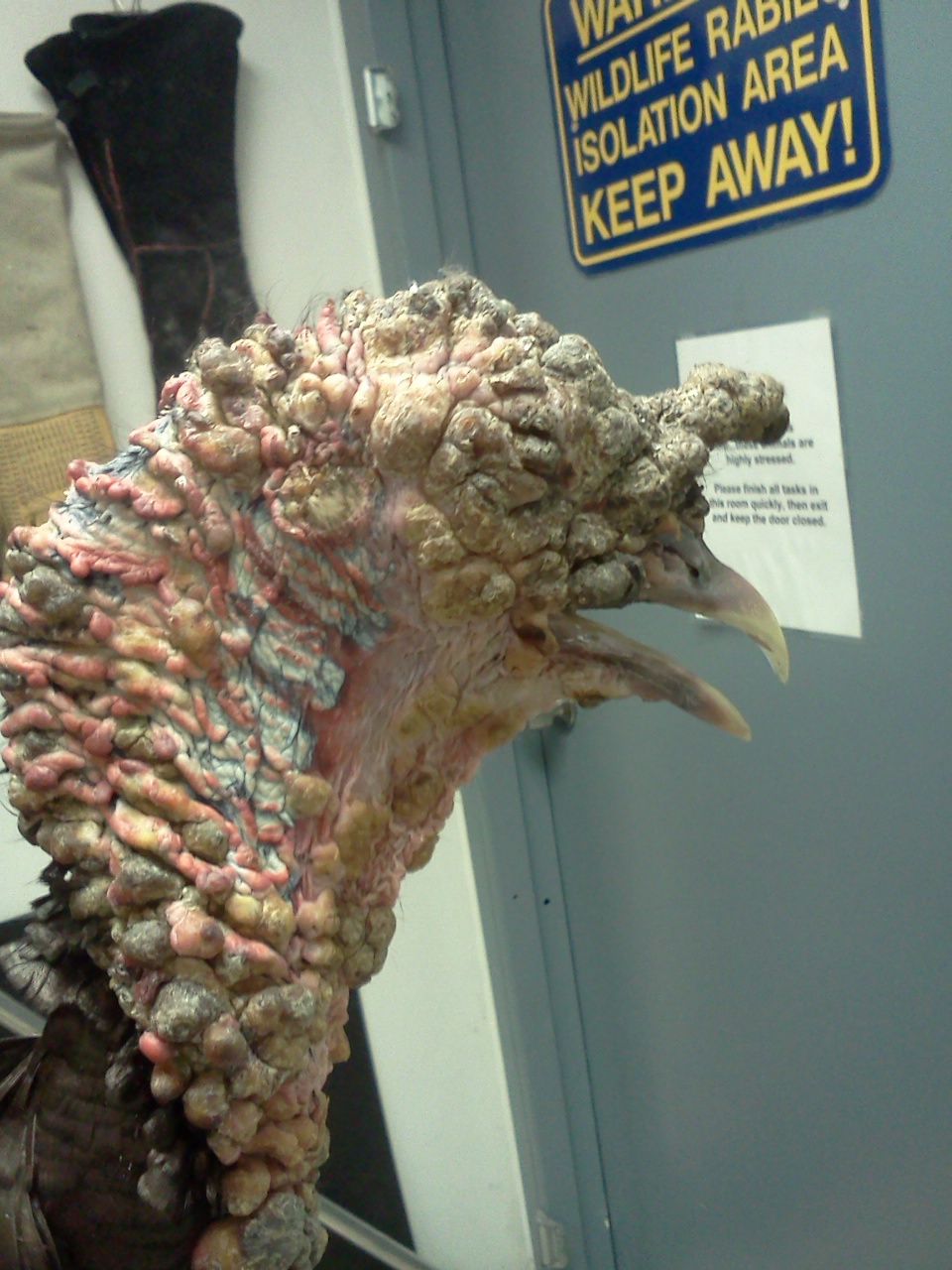By Mike Weilbacher, Executive Director
The Schuylkill Center does a lot of exceptionally cool things: we teach thousands of people, protect hundreds of acres of habitat.
But just maybe the coolest thing we do is save animals. Lots and lots of animals.
Yesterday, WMMR’s Pierre Robert was given the honor of releasing a snapping turtle—a remarkably ancient predator—into the Schuylkill River, the same turtle he brought to our Wildlife Clinic almost 14 months ago. After 14 months of TLC—at great cost to the center—the world is richer by one turtle.
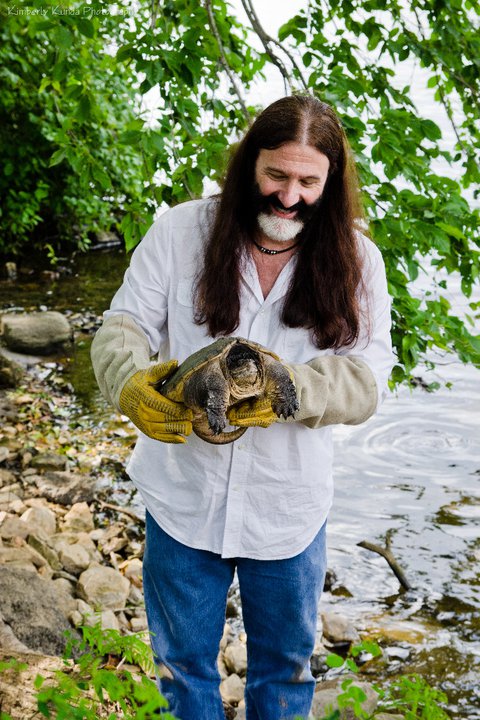
Pierre and Thomas Share a Parting Moment Together
But consider the animals still at the center today: about 55 opossums, 20 raccoons, 20 baby cottontail rabbits, 20 baby robins and rock doves each, 10 screech owls, a dozen mallard ducks, six red-tailed hawks, 2 vultures, and an entire rainbow of additional animals from scarlet tanager to blue jay. In all, more than 260 critters are crowded into our clinic, all getting the extraordinary attention of rehabbers Rick Schubert and Michele Wellard and their team of 70 volunteers.
All of these animals are brought here to us by people like my next door neighbor, who found a baby mourning dove on her deck, its wing bleeding from a fall out of it’s nest, or my neighbor across the street, who found a baby sparrow on their porch Sunday, called me in distress, and, with great relief, brought it to the clinic.
Or people like Pierre Robert, who saw a turtle crossing Conshohocken State Road in Gladwyne, a street where traffic moves fast. He had the presence to stop traffic—and bring it to us.
Here’s how important, no, vital, our clinic is: last week, we housed first a baby peregrine falcon that fell out of City Hall’s nest, and then a baby peregrine found dazed and confused on a Center City street (but that had hatched on a nest on the Walt Whitman bridge), and then the red-tailed hawk that had fallen out of the Franklin Institute’s nest, breaking its leg on the fall to the sidewalk. Three of Philadelphia’s most famous birds, in our clinic.
Peregrines, the world’s fastest birds, are highly endangered species, by the way.
That’s the clinic, a hard-working staff tirelessly taking in and repairing thousands of animals, maybe 15 or even 20 new ones every single day this time of year, as babies fall out of nests and mother opossums are hit by cars, leaving babies to fend for themselves.
Ironically, the day Pierre Robert released the turtle he nicknamed Thomas into the Schuylkill, guess what was brought into the clinic? A whoppingly large 40-pound snapping turtle. Just another day in the clinic.
If you agree that this is just about the coolest thing we do, please join me in supporting our campaign for the clinic by making a contribution online or by mail..
I post this early in the morning, and 20 more animals will find their way to our safe haven today. Won’t you help them? Thanks so much.

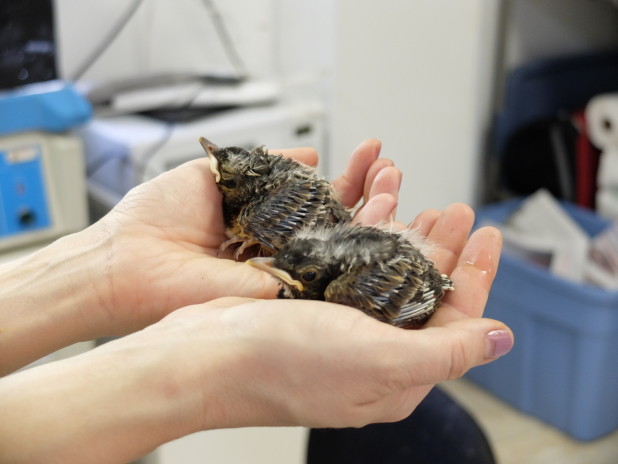
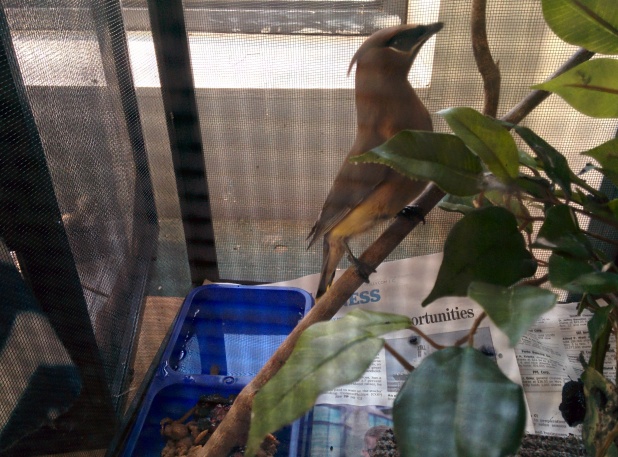
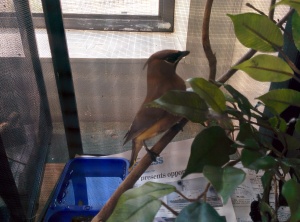 These symptoms are also connected with head trauma in wild birds, so that was also a possibility. But given his behavior, we didn’t think that was the case. He was much, much more ‘still’ than other concussed birds I’ve treated, and there was just something odd about the way he looked. Sure enough, after two days in the ‘drunk tank’ – after some anti-inflammatories, lots of fluids, and lots of free berries and worms from us, he started acting like a wild bird, completely scared of us and fluttering around and flying just like a normal wild bird. Sometimes birds like this fly into windows, or get stepped on, so he could have really been injured. I’m glad the woman was concerned enough to bring him to us.
These symptoms are also connected with head trauma in wild birds, so that was also a possibility. But given his behavior, we didn’t think that was the case. He was much, much more ‘still’ than other concussed birds I’ve treated, and there was just something odd about the way he looked. Sure enough, after two days in the ‘drunk tank’ – after some anti-inflammatories, lots of fluids, and lots of free berries and worms from us, he started acting like a wild bird, completely scared of us and fluttering around and flying just like a normal wild bird. Sometimes birds like this fly into windows, or get stepped on, so he could have really been injured. I’m glad the woman was concerned enough to bring him to us.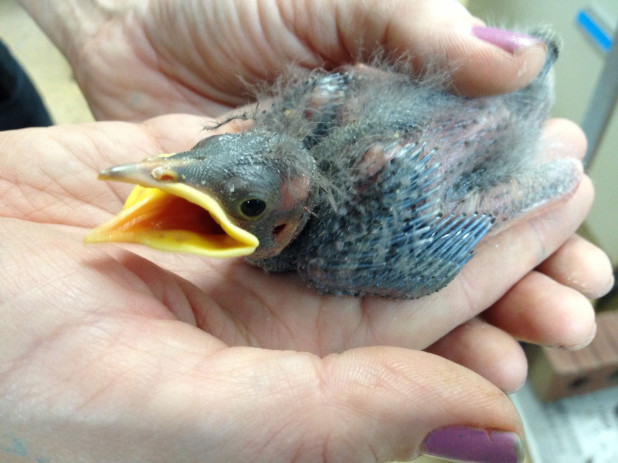
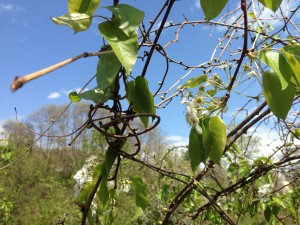 Toads, singing in afternoon sunlight. A basin in this field fills with water most of the year, creating a nice habitat for toads and other amphibians. Around the field and basin are vines, grasses, and flowering trees.
Toads, singing in afternoon sunlight. A basin in this field fills with water most of the year, creating a nice habitat for toads and other amphibians. Around the field and basin are vines, grasses, and flowering trees.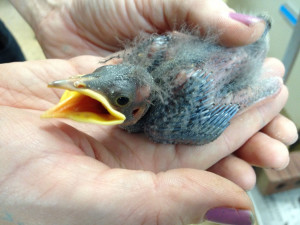

 Melissa Nase, Manager of Land Stewardship, transplants tiny Rudbeckia, black-eyed Susan seedlings in the Native Plant Nursery. These seedlings were grown from seeds collected here at the Schuylkill Center.
Melissa Nase, Manager of Land Stewardship, transplants tiny Rudbeckia, black-eyed Susan seedlings in the Native Plant Nursery. These seedlings were grown from seeds collected here at the Schuylkill Center.